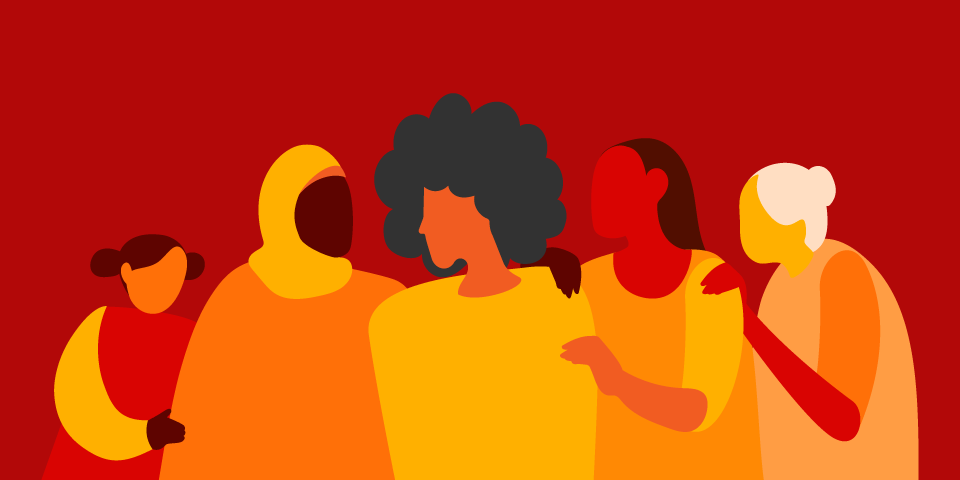Violence Against Women By Other Women
Dec 24, 2021 | Shalini Rai
All this is also reflective of the type of society we live in -- patriarchal, misogynist, opaque. While the task may appear daunting and impossible, a beginning has to be made somewhere (Representational Image)
A few days ago, a Dharma Sansad was held in Haridwar, the holy city on the banks of the holy river Ganga. As the name indicates, a ‘Dharma Sansad’ is a congregation of ‘representatives’ of a Dharma (Religion), in this case the Sanatan Dharma or as it is more colloquially known, the Hindu Dharma/Hindutva.
This particular Dharma Sansad (Parliament) has made news for some very disturbing reasons. The prominent among them are its calls for violence against minorities, a certain sort of ethnic cleansing (“Safai Abhiyan”). Another is the fact that a woman priest, Sadhvi Annapurna exhorted people to take up arms, saying, “Nothing is possible without weapons…”
This shockingly, is not the first time a ‘Sadhvi’ and violence have been mentioned in the same sentence. And this includes violence against other women as well.
Sadhvi Pragya Singh Thakur, a BJP MP from Bhopal, is an accused in the 2008 Malegaon Bombings, in which 10 people were killed and 82 injured. After her bike was found to be used in the Malegaon blast, she was arrested on terror charges and is now under trial for multiple charges under the Unlawful Activities (Prevention) Act. In 2017, she was granted bail on health grounds, following the dropping of some of the serious charges by the National Investigation Agency. Thakur contested the 2019 General Election from the Bhopal constituency against former MP CM Digvijaya Singh of the Congress and won her debut election by a margin of 364,822 votes.
Political scientist Christophe Jaffrelot says she has become the “symbol” of the 2019 election, in which nebulous fringe elements of the Hindutva ideology became mainstream.
Nowhere is this more starkly visible than in the Haridwar Dharma Sansad and the hate speeches that were delivered there. Significantly, it also raises the spectre of women professing violence against other women, a dystopia in which gender roles are subsumed by and become subservient to religious dogma and communal mania.
This might appear to be, but unfortunately, is not, an exception. During the dark days of the Gujarat riots of 2002, TV footage and reports showed families from the majority community, including women, participating in violence and attacks on minorities (also consisting of women).
Staying with the communal riots in Gujarat, newspapers at the time reported seeing Hindu women with weapons going around as part of mobs committing arson and attacking Muslims. There were also reports that closed circuit cameras had captured images of women participating in the looting of shops. Activists on fact-finding missions also reported observing women participating in violence, and Muslim women complained of being “betrayed” by their (female) neighbours.
Citing the active participation of women in the violence against members of the Muslim community, the Head of the All India Muslim Women’s Conference termed it as a division of women along religious lines.
So, what could be responsible for this turn of events? What made Hindu women in 2002 and Hindu women priests (and public figures) subsequently, urge people so blatantly to resort to violence?
Was it the psychological commendations that follow such acts that impelled them to do so? Did the concomitant rise in public stature and improvement in social standing that come on the back of these acts play a role? Was it another consideration altogether, which only the women in question know of and were motivated by?
We may never really know. But one thing is clear and that is when the Overton window shifts and expands, previously anathema concepts and taboo (or discouraged) behaviour patterns become acceptable, even rewarding.
The Overton Window is a model for understanding how ideas in society change over time and influence politics. It encompasses the range of policies politically acceptable to the mainstream population at a given time. Some policies lie inside the Overton Window and other policy ideas exist, but politicians risk losing popular support if they champion these ideas. These policies lie outside the Overton Window.
With the Overton Window, the number of ideas that politicians and public figures can support without unduly risking their standing can either increase or shrink. As a rule, the window moves based on a much more complex and dynamic phenomenon, one that is not easily controlled from ‘above’: the slow evolution of societal values and norms.
And so we see that in the context of the Dharma Sansad and hate speeches in Haridwar, the Overton Window has visibly shifted to include as mainstream (or at the very least, acceptable) the previously largely-pariah concept of women instigating/approving/exhorting violence against other women.
In this instance, religious affiliations well and truly transmuted any concerns regarding gender solidarity. And this is the truly disquieting bit among all the discomfiture caused by this divisive and abrasive event.
